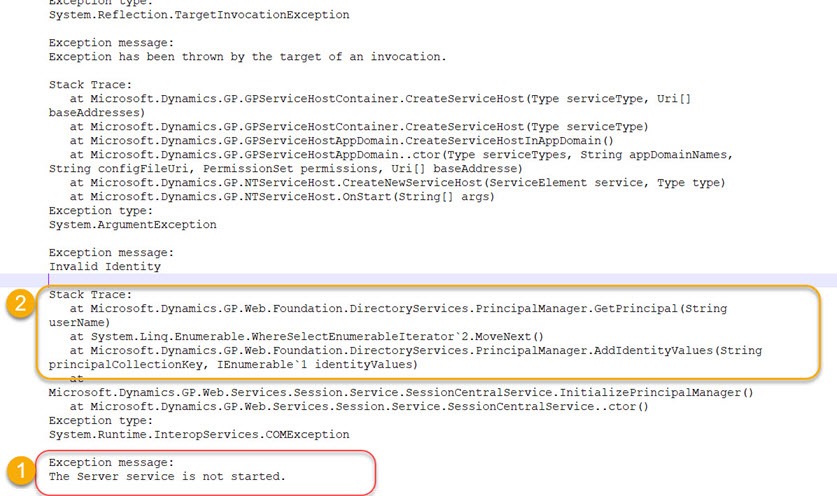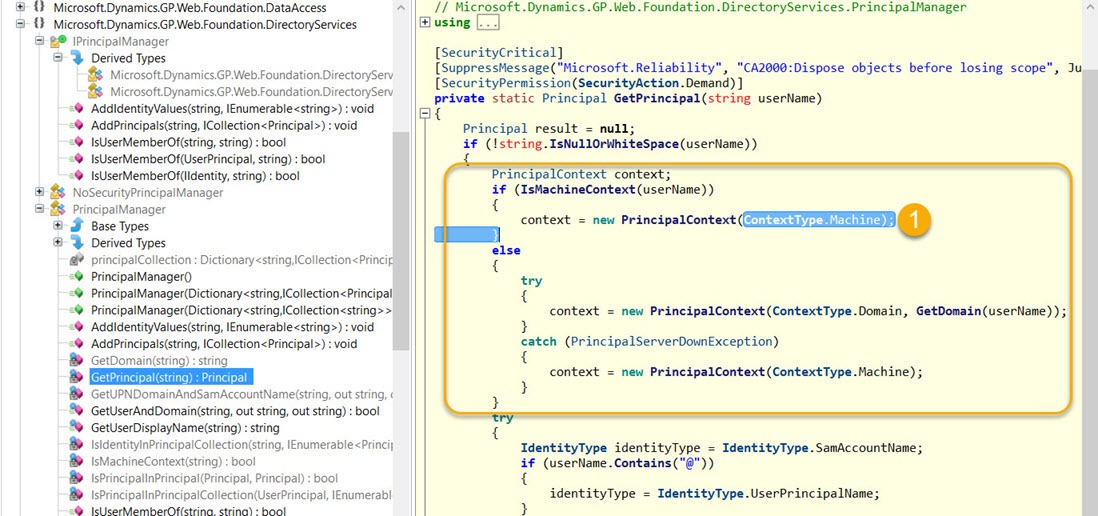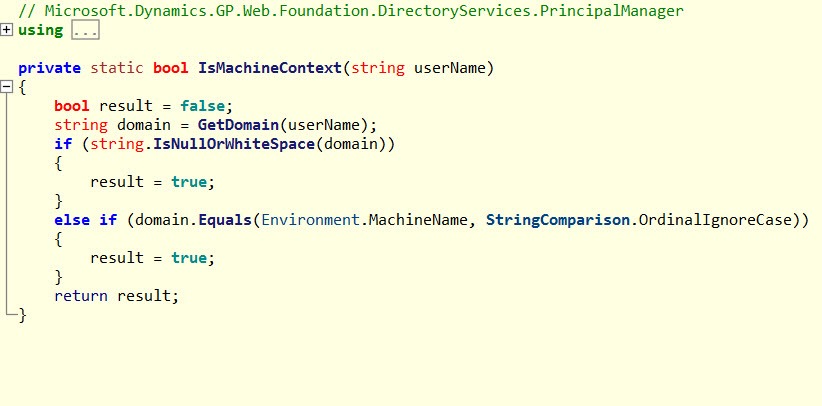Dynamics GP Web Client is not compatible with Docker due to the Session Central Service not starting
Dynamics GP running in Docker Container Failed
Back in 2017 I attended NAVTechDays and after seeing the benefits the Dynamics NAV community were getting from Docker containers with NAV, I could see similar benefits for Dynamics GP and was also seeing interest in some of the conversations going on out of public within the GP community. I decided to see if I could get a good selection of Dynamics GP versions into Docker. Word of that work spread and brought out more people interested in containers for GP.
I spent a lot of hours attempting to learn Docker and to containerise Dynamics GP. I could build Docker images for the GP server database and add in various of the GP components like eConnect and oData. Sadly I was unable to get the Dynamics GP Web Client working – I really was just a cat's whisker away from success too. I was defeated by the Domain Account the Web Client runs under and its use of System.DirectoryServices.AccountManagement . The following is a record of what I found when investigating that issue.
Although I can create a Docker container for the database and test company and even things like eConnect, there is a big problem. You see, there is no GUI with Docker containers, you can’t just remote desktop into one, you really need the Web Client running in order to make a self contained system to allow the host to interact with the Dynamics GP application in the container. If you can't access it from a browser, then you end up having to install the GP client on a non-docker machine (host) and connect using it to the running Docker container. Although this works its not really in the spirit of what I was trying to achieve, which was a fully self contained container for GP to allow multiple versions of GP to be easily spun up for testing and demo purposes.
Why I failed?
After the Docker image has installed GP and the the web client product features are installed, one of these, the Session Central Service fails to start within the container. The Session Central Service is the component of the Dynamics GP web client installation that creates and tracks individual web client sessions as users connect and disconnect via web browsers. It is essential to getting web client to work.
At this point let me jump tight to the core issue, essentially the problem is that the “Lanman” windows service can’t be started in a Windows container. The Lanman service provides things like SMB file share services and is also referred to as the “Sever Service”, as that is how it appears, named in the services control panel list of services.
Containers are supposed to be stateless isolated single-app process groups, not mini virtual machines, so running Lanman would break that philosophy, hence it is not appropriate for it to be supported in Windows Docker containers as it doesn't make sense. Containers are supposed to be created and torn down at the drop of a hat, participating in active directory goes against the grain. This is why, along with a few other Windows features that are inappropriate for containers, we find the Lanman service just isn’t supported in a Windows Container.
So why is this a problem?
You find that the session central service, checks for the user running, see (2) in the following screenshot, and it does this using a call to the following method:
Dynamics.GP.Web.Foundation.DirectoryServices.PrincipalManager.GetPrincipal
This method in turn calls .NET method:
System.DirectoryServices.AccountManagement.Principal.FindByIdentityWithType(PrincipalContext context, Type principalType, IdentityType identityType, String identityValue)
It is the above call that fails, and looking in the event log we see it reporting as indicated by (1) in the screenshot below that:
Exception message:
The Server service is not started.
Hey? - "The Server service is not started" – a confusing message as it means that the Lanman Service (aka server service) is not started. Yes this was super confusing error at the start of this investigation, not realising there was a "server service", so I assumed it was just a poor error message that wasn't telling me the service that had failed. So once I realised what it meant, I found out that, indeed if you go into the Docker container with Power Shell you can check that the Server Service is not started and even try to start it, however it w_ill not start_, and this is due to the lack of support in windows containers, as previously stated. Lanman service can't be run on a windows container, thus preventing the use of .NETs System.DirectoryServices.AccountManagement. Microsoft in the past also confirm there are no plans for this to ever change, as it is fundamentally at odds with container philosophy to have this service running.
Without a small change to the Session Central Service code I was not going to get anywhere with this until…
Docker and Group Managed Service Account (gMSAs)
Hope then followed when I then discovered about the existence of Group Managed Service Account (gMSA), that I thought may provide a route to get around the lack of Lanman support. Using it we can authenticate to Active Directory resources from Windows container which is not part of your domain (remember the container is not part of domain), using gMSA. gMSA is a special account that can be used to (over simplifying it) allow passing over a domain account for the purposes of running a service. This could be perfect for replacing the user running the session central service, instead it can ran using a gMSA account for authentication. That in turn would bypass Lanman. When you run a container with a gMSA, the container host retrieves the gMSA password from an Active Directory domain controller and gives it to the container instance. The container will use the gMSA credentials whenever its computer account (SYSTEM) needs to access network resources. In our case, when building the Docker container we can use Power Shell to change the Session Central service to use the SYSTEM account having prepared the plumbing required for gMSA to authenticate against AD. SYSTEM become a kind of proxy for the AD account behind the gMSA account. For this to work certain prerequisites needs to be met, there is quite a bit of learning that is more than I want to get into here. I built this up in Docker to test.
Sadly on testing this thoroughly for a few days, it turns out there is another a problem. A docker container can access AD using the gMSAsaccount, allowing FindByIdentity to work WHEN the constructor for PrincipalContext is created with “ContextType.Domain” and specifying an accessible AD. The group managed service account technique does not work when the context type of “ContextType.Machine” is used to create the PrincipalContext.
If we look at what is going on in the class in the screen shot– we find that the class is created with a constructor specifying machine as the context, stumping our attempts to use the gMSA to get around the lack of Lanman. This is due to no user name getting passed to the isMachineContext function (see last screen shot). I'm guessing that using the built in NETWORK user means no user name is passed into this method thus resulting in the highlighted code (1) being ran in the following screen shot. This was upsetting to find as I thought I had it cracked at this point.
Not all that learning is a loss as it was interesting to learn about gMSA as it is an important container and enterprise computing concept to understand.
The following screenshot shows the code causing our issue (1) in the Microsoft.Dynamics.GP.Web.Foundation.DirectoryServices.PrincipalManager.
User name being blank when calling the following IsMachineContext method then means the split in the logic in the above screen shot causes it to create the PrincipalContext using the wrong context type to use gMSA.
Finally
We can create containers with the database and test company but sadly we end up having to install the GP client on the host to access the container, that was not really my objective.
Would be amazing if the code could be updated by Microsoft but I don’t see this happening. I need to refresh myself on the exact details of this issue and check again that nothing has changed in the years since I was trying as Docker is getting constantly improved with new features.



